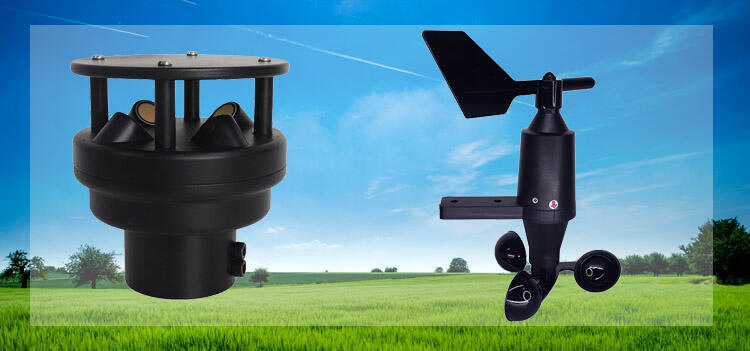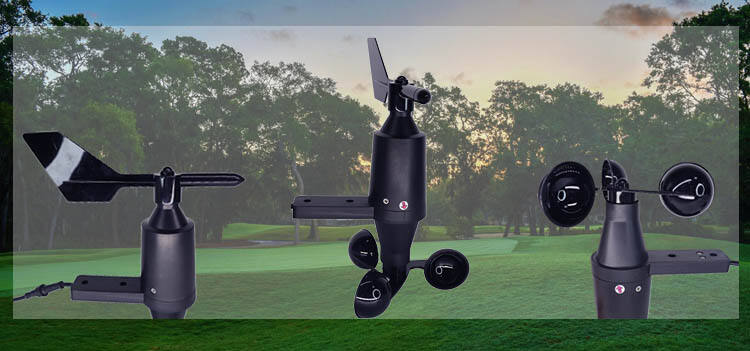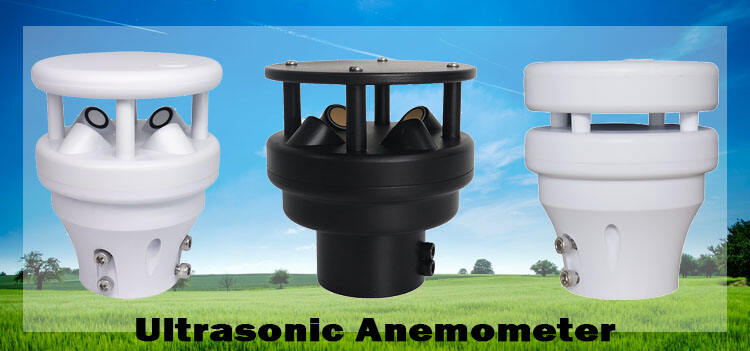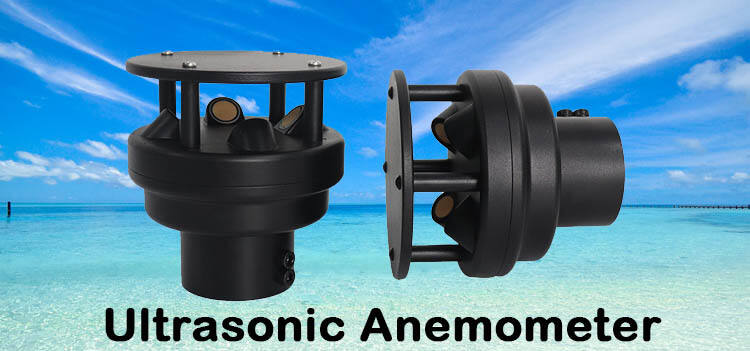I believe you are also curious about this question at this moment, so this article will give you the answer.
Anemometer is a wind measurement device that has existed for hundreds of years. However, the accuracy of the original anemometer was not high. With the development of science and technology, anemometers have become more accurate and have more ways to measure! In addition to traditional mechanical anemometers, there are now ultrasonic anemometers.

Working principle of anemometer
In the field of meteorological monitoring and wind measurement, ultrasonic anemometers and cup anemometers are two widely used devices. Their measurement principles are different, and their use environments and performance characteristics also have different focuses.
Cup anemometers are a classic mechanical anemometer. Several small wind cups rotate with the wind, and the stronger the wind, the faster they rotate. By measuring the number of revolutions per unit time, combined with the conversion coefficient inside the device, the wind speed value can be obtained. One of its advantages is that it does not need to face the direction of the wind, and the installation is relatively simple, so it is very convenient to use in some fixed locations, such as building roofs, ships or scientific research platforms.

The ultrasonic anemometer is more "advanced". It does not have any mechanical rotating parts, but relies on sensors to send and receive ultrasonic signals to determine the impact of wind on the propagation speed of sound waves, so as to accurately calculate the wind speed and direction. This type of equipment measures faster and more stably, and is particularly suitable for scenarios with high data accuracy requirements and complex environmental conditions, such as wind farms, high mountain monitoring points, or automatic weather stations and other long-term unattended equipment platforms.

What types of anemometers are there? Comparison of the advantages and disadvantages of various anemometers
Although the most common ones we usually see are cup anemometers and ultrasonic anemometers, in fact, there are far more types of wind speed measurement equipment than these two. According to different working principles, anemometers can be roughly divided into the following categories:
Impeller anemometer: Similar to a small propeller, it needs to face the wind direction to measure. It is sensitive to changes in wind speed and is commonly found in portable handheld devices.
Ultrasonic anemometer: No mechanical structure, using the time difference of sound wave propagation to calculate wind speed and direction. High accuracy and fast response, suitable for occasions that require long-term unattended operation or high data requirements.
Thermal anemometer (hot wire type): The wind speed is determined by monitoring the speed at which air flow takes away heat through a thermal sensor. It is suitable for use in laboratories or clean environments, but is sensitive to external temperature and humidity changes.
Laser Doppler anemometer: It uses the principle of laser scattering, has extremely high accuracy, and is expensive. It is generally used in scientific research or professional wind tunnel testing.
Different types of anemometers have different focuses on structural complexity, measurement accuracy, and applicable scenarios. The key to choosing which one to choose depends on the actual needs of your project.

How to choose a suitable anemometer? Practical purchasing guide
The key to choosing an anemometer is not "the more expensive the better". The key is to choose the one that suits your working conditions. The following suggestions may provide some reference for your selection:
Measurement requirements: Do you only need to measure wind speed, or wind speed + wind direction? Do you also need to collect meteorological parameters such as temperature and humidity?
Use environment: If the use environment is dusty, rainy or extreme climate, it is recommended to choose a model with high protection level and strong corrosion resistance; if it is in a laboratory or indoor working condition, thermal or impeller equipment can also do the job.
Data accuracy and response time: Scientific research projects and wind power measurement usually require higher response time and accuracy for wind speed changes. In this case, ultrasonic anemometers are more recommended.
Installation and power supply: Is it fixed or handheld? Is it used in a power supply location, or relying on solar energy or batteries? This also directly affects the model selection.
Budget and maintenance cost: Traditional mechanical anemometers are affordable and have low maintenance costs; while ultrasonic equipment has high initial investment, but almost no maintenance is required in the later stage.
If you are not sure which one to choose, you may as well tell our Yantai team about your usage scenario. We will provide you with suitable product recommendations and technical solutions based on years of project experience. We have always believed that the right one is the best.
Finally, if you are looking for an anemometer suitable for your project, whether it is a sturdy and simple cup type or a responsive and high-precision ultrasonic model, we Yantai can provide you with reliable options. Our products are stable in practical applications, complete in variety, and support personalized customization. Whether it is scientific research purposes, industrial monitoring, or wind power testing, we have rich experience to provide you with technical support.
Feel free to contact Yantai. We will recommend the right product model based on your needs. We can also provide installation advice and post-maintenance guidance. No matter how big or small the project is, we are happy to help.

 EN
EN
 AR
AR
 BG
BG
 HR
HR
 FR
FR
 JA
JA
 KO
KO
 PT
PT
 RU
RU
 ES
ES
 ID
ID
 VI
VI
 TH
TH





